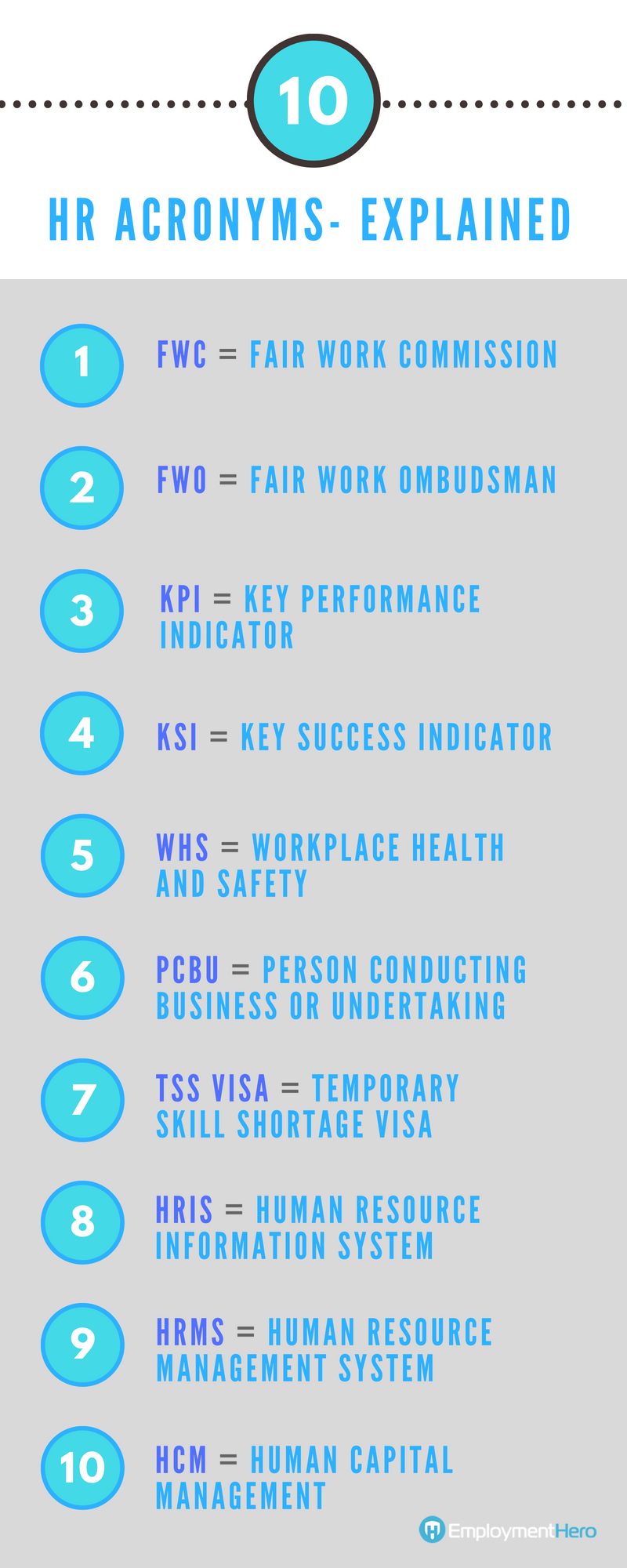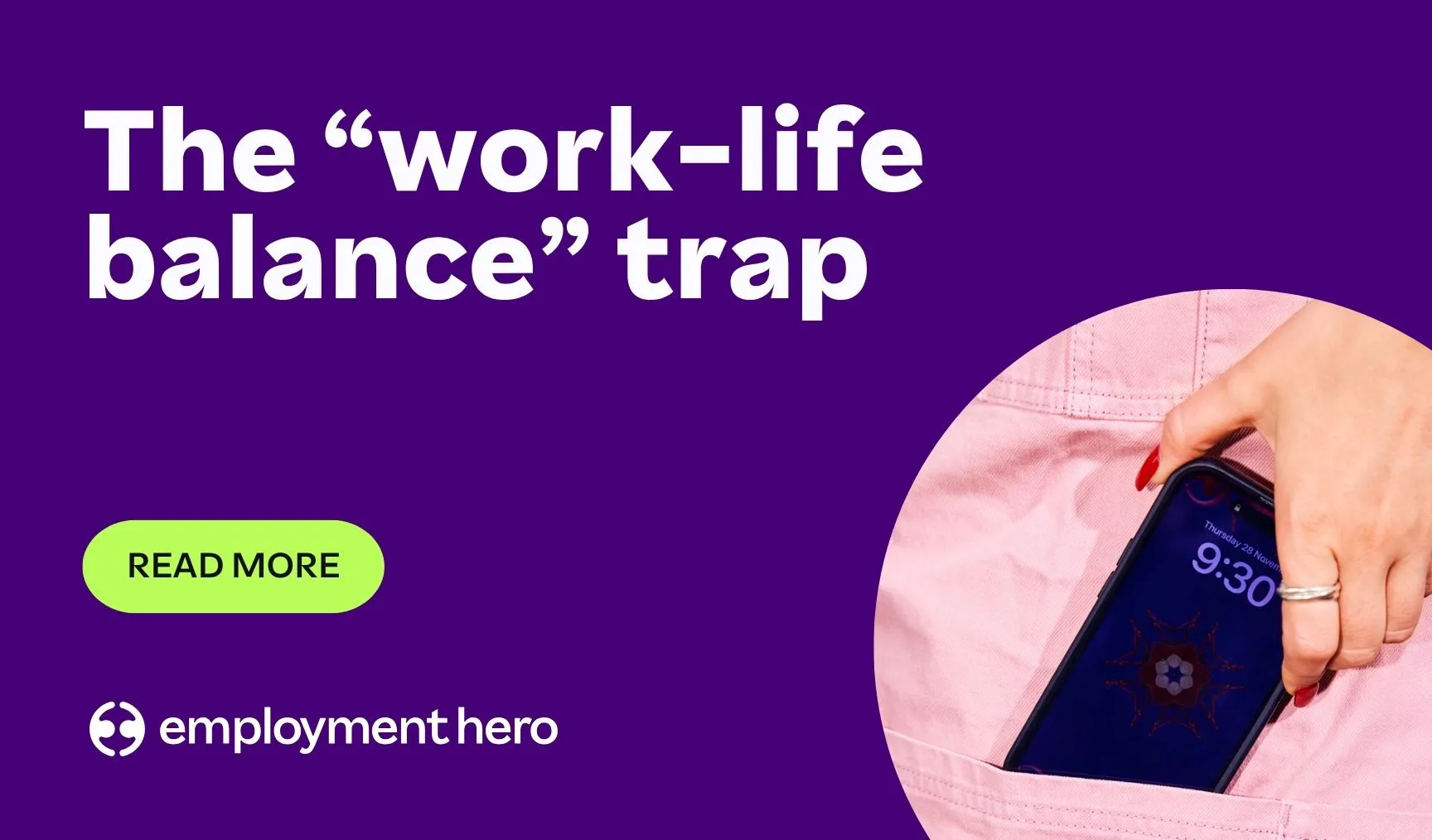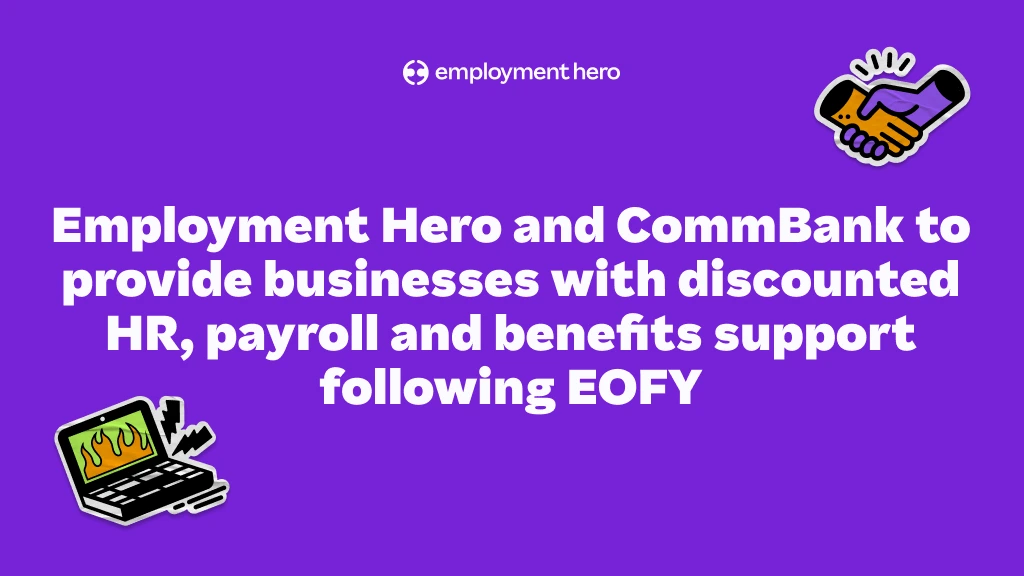Guide to Human Resources (HR) acronyms
To help you learn the HR lingo, we’ve drawn up a cheat sheet of common HR acronyms.

Do you know your FTEs from your PTEs? Have trouble figuring out the FWC and FWO?
If you’re thinking, WTH? – you’re not alone. The world of human resources (HR) is a veritable smorgasbord of acronyms and abbreviations that you don’t come across in everyday life. While they can be confusing, many of these HR terms and acronyms are important if you employ people.
For example, FTEs and PTEs are just shorthand codes for full-time and part-time employees.
To help you learn the lingo, we’ve drawn up a cheat sheet of common HR acronyms. You’ll be using shorthand with the best of them in no time.

Glossary of human resources acronyms
1. FWC and FWO
The two most used HR acronyms in Australia are FWC and FWO.
FWC stands for Fair Work Commission. FWO stands for Fair Work Ombudsman. Both are independent government organisations that regulate Australia’s workplaces under the Fair Work Act.
What is the FWC?
The FWC is Australia’s national workplace relations tribunal. Its role is to assist employees and employers in maintaining fair and productive workplaces. Its role includes:
- Setting minimum wages
- Creating and changing modern awards
- Approving enterprise agreements, and
- Acting as the independent umpire in disputes, including unfair dismissal claims.
What is the FWO?
The FWO enforces compliance with the Fair Work Act, related legislation, awards and more, ensuring workers receive their correct wages, holidays and entitlements. As an employer, it can provide you with advice about the minimum entitlements in modern awards and the Fair Work Act.
2. KPI and KSI
In our humble opinion, both these terms refer to the same concept.
KPI means key performance indicator. KSI means key success indicator. Whatever you call them, they’re designed to help you define and measure your employees’ progress toward agreed goals.
The KPIs you choose depend on your specific business operations, but they need to be:
- Measurable
- Well-defined
- Well communicated, and
- Critical to achieving your business goal.
Make sure your employee KPIs measure areas that influence the success of the business. When an employee’s goal is defined in terms of your business KPI, it ensures that what the employee is doing is well aligned with the goals of the business.
A good KPI will work to motivate your employees to work hard, but not be unrealistic and out of reach. Avoid setting them too high or you’ll demoralise employees who can’t attain them. A good way to do this is to seek employee feedback on what they think their potential is and use this as the baseline. Otherwise, you could base it on what previous employees achieved in that role.
The most effective KPIs are measured against a time factor, such as targets to be met per day, per month, per quarter and annually.Here’s three examples:
- Customer service: Increase the number of satisfactory complaint resolutions by 15% this quarter.
- Human resources: Reduce the average cost to recruit per job position by 5% this quarter.
- Finance: Reduce total value of overdue invoices by 10% this quarter. By setting KPIs and KSIs around a certain outcome, the chance of that outcome being achieved is much higher, simply because you’ve made the commitment to managing and measuring the results.
3. WHS and PCBU
WHS stands for Workplace Health and Safety. PCBU stands for person conducting business or undertaking. The WHS Act (< see how handy the acronym is) places primary responsibility for safe workplace on PCBU.
WHS needs to be a top priority for all employers even if you operate in a low risk industry. As a business owner/employer, it’s essential to develop a safety culture and do all you can to make your workplace as safe as possible. And while you may have officers, such as directors and managers, who will have specific safety responsibilities, it’s important to remember PCBU, the primary responsibility for a safe workplace rests with you.
You need to demonstrate your commitment to safety and ensure that everyone in your business is clear about their health and safety responsibilities. It’s equally important that your workforce is adequately trained and understands how you manage workplace safety, and can use the systems you have put in place.
4. TSS Visa
TSS stands for Temporary Skill Shortage visa. If you hire workers from overseas in hard-to-fill positions, you’re probably very well acquainted with the new TSS visa which came into effect in March 2018.
TSS replaced the old 457 Visa and is made up of two streams:
- Short term, which is up two years, and
- Medium term, for up to four years.
Both streams come with a lot more paperwork and hoops to jump through before you can be deemed eligible to offer overseas workers the opportunity to fill vacant positions. This includes compulsory labour market testing for all occupations, a market salary rate assessment, and a new non-discriminatory workforce test. TSS also comes with tightened English language requirements and applicants will have to undergo a criminal check.
5. HRIS, HRMS and HCM
HRIS stands for human resource information system. HRMS stands for human resource management system. HCM stands for human capital management.
All these terms are typically used interchangeably to describe HR software designed to manage your people, policies, and procedures.
HR software automates repetitive and time-consuming tasks associated with employing people. In doing so, HRIS frees you and your staff up from process-driven tasks, so you can focus more time on work that better impacts your bottom line.
With HR technology, you can generate real business insights to optimise employee engagement, productivity, and so much more.
Some of the many benefits of an HRIS include:
- Reduced paperwork
- Digital onboarding and employee records
- Reduced admin tasks with employee-self service
- Increased data safety and security
- Simplified HR compliance
- 24/7 access to HR content and files
These days, you can take advantage of HRIS technology as a software-as-a-service offering. This way you pay a subscription fee based on the number of employees in your business (typically per month or per year) to use the software rather than having to fund a major software investment.
This means:
- Zero capital expenditure
- Reduced administration cost
- Automatic upgrades to functionality and content with no downtime, and
- It can scale with you
So there you have it. 10 common HR terms explained! Be sure to save our infographic above so you can refer back to it at any time.
If you’re keen to learn more about HR, be sure to read about the latest HR trends and HR management here.
Related Resources
-
 Read more: The ‘work-life balance’ trap: Why promising it is hurting your SME recruitment (and what to promise instead)
Read more: The ‘work-life balance’ trap: Why promising it is hurting your SME recruitment (and what to promise instead)The ‘work-life balance’ trap: Why promising it is hurting your SME recruitment (and what to promise instead)
For growing SMEs, work-life integration is a sustainable way to support your team and attract top talent. Explore how your…
-
 Read more: Job ad guide: How to attract top candidates
Read more: Job ad guide: How to attract top candidatesJob ad guide: How to attract top candidates
Looking to hire your perfect match? The way you pitch your open role can be the difference between landing or…
-
 Read more: Employment Hero and CommBank to provide businesses with discounted HR, payroll and benefits support following EOFY
Read more: Employment Hero and CommBank to provide businesses with discounted HR, payroll and benefits support following EOFYEmployment Hero and CommBank to provide businesses with discounted HR, payroll and benefits support following EOFY
Eligible CommBank Yello for Business customers will get the first 3 months free on any Employment Operating System subscription with…






















